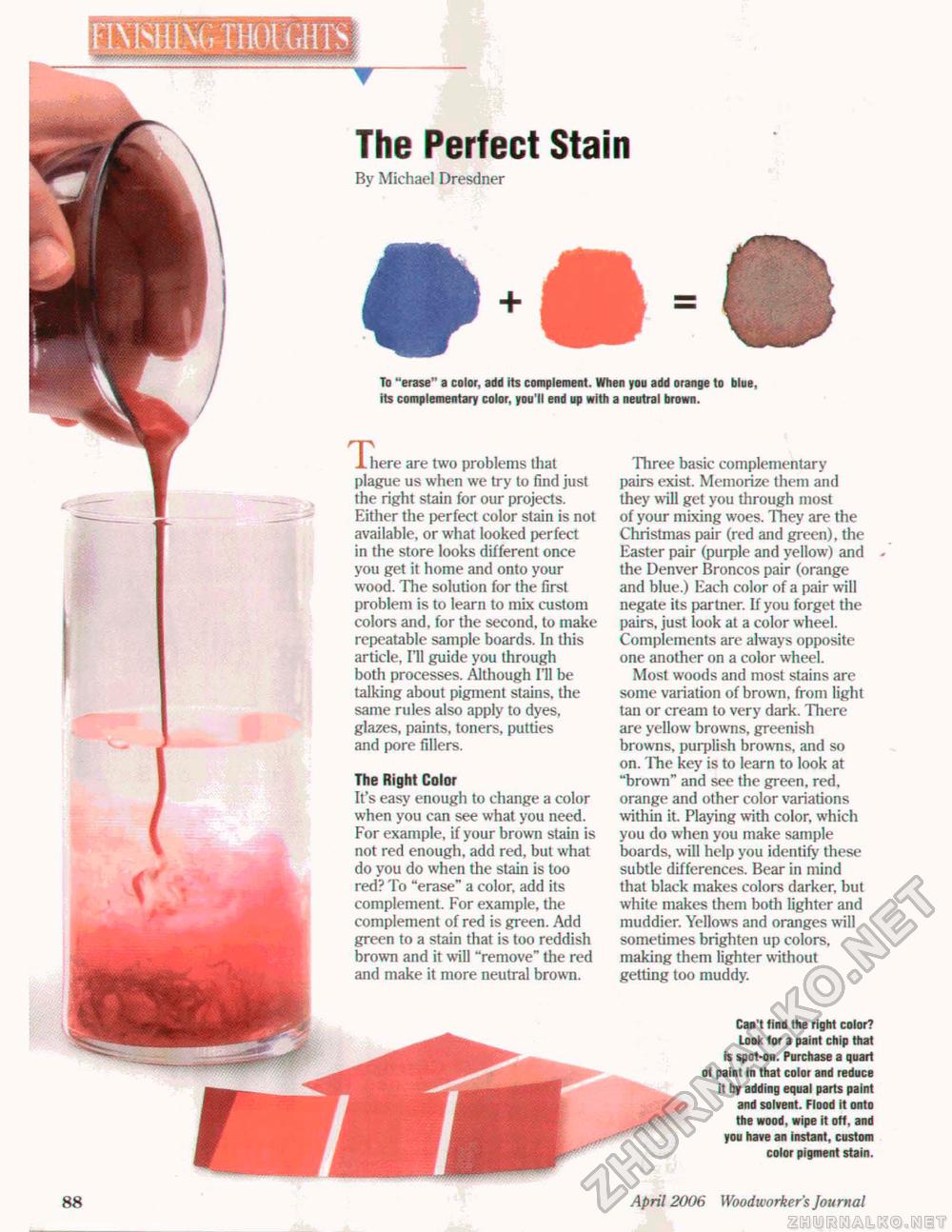Woodworker's Journal 2006-30-2, страница 88
The Perfect Stain Bv Michael Dresdner To "erase" a color, add its complement. When you add orange to blue, its complementary color, you'll end up with a neutral brown. X here are two problems thai plague us when we try to find just the right stain for our projects. Either the perfect color stain is not available, or what looked perfect in the store looks different once you get it home and onto your wood. The solution for the first problem is to learn to mix custom colors and. for the second, to make repeatable sample boards. In this article, I'll guide you through both processes. Although ill be talking about pigment stains, the same rules also apply to dyes, glazes, paints, toners, putties and pore fillers. The Right Color It's easy enough to change a color when you can see what you need. For example, if your brown stain is not red enough, add red, but what do you do when the stain is too red? To "erase" a color, add its complement. For example, the complement of red is green. Add green to a stain that is too reddish brown and it will "remove" the red and make it more neutral brown. Three basic complementary pairs exist. Memorize them and they will get you through most of your mixing woes. They are the Christmas pair (red and green), the Easter pair (purple and yellow) and the Denver Broncos pair (orange and blue.) Each color of a pair will negate its partner. If you forget the pairs, just look at a color wheel. Complements are always opposite one another on a color wheel. Most woods and most stains are some variation of brown, from light tan or cream to very dark. There are yetlow browns, greenish browns, purplish browns, and so on. The key is to learn to look at "brown" and see the green, red, orange and other color variations within it. Playing with color, which you do when you make sample boards, will help you identify these subtle differences. Bear in mind that black makes colors darker, but white makes them both lighter and muddier. Yellows and oranges will sometimes brighten up colors, making them lighter without getting too muddy. Can't find the right color? Look lor a paint chip that is spot-on. Purchase a quart of paint in that color and reduce it fay adding equal parts paint and solvent. Flood it onto the wood, wipe it off, and you have an instant, custom color pigment stain. 88 April 2006 Woodworker's Journal |








